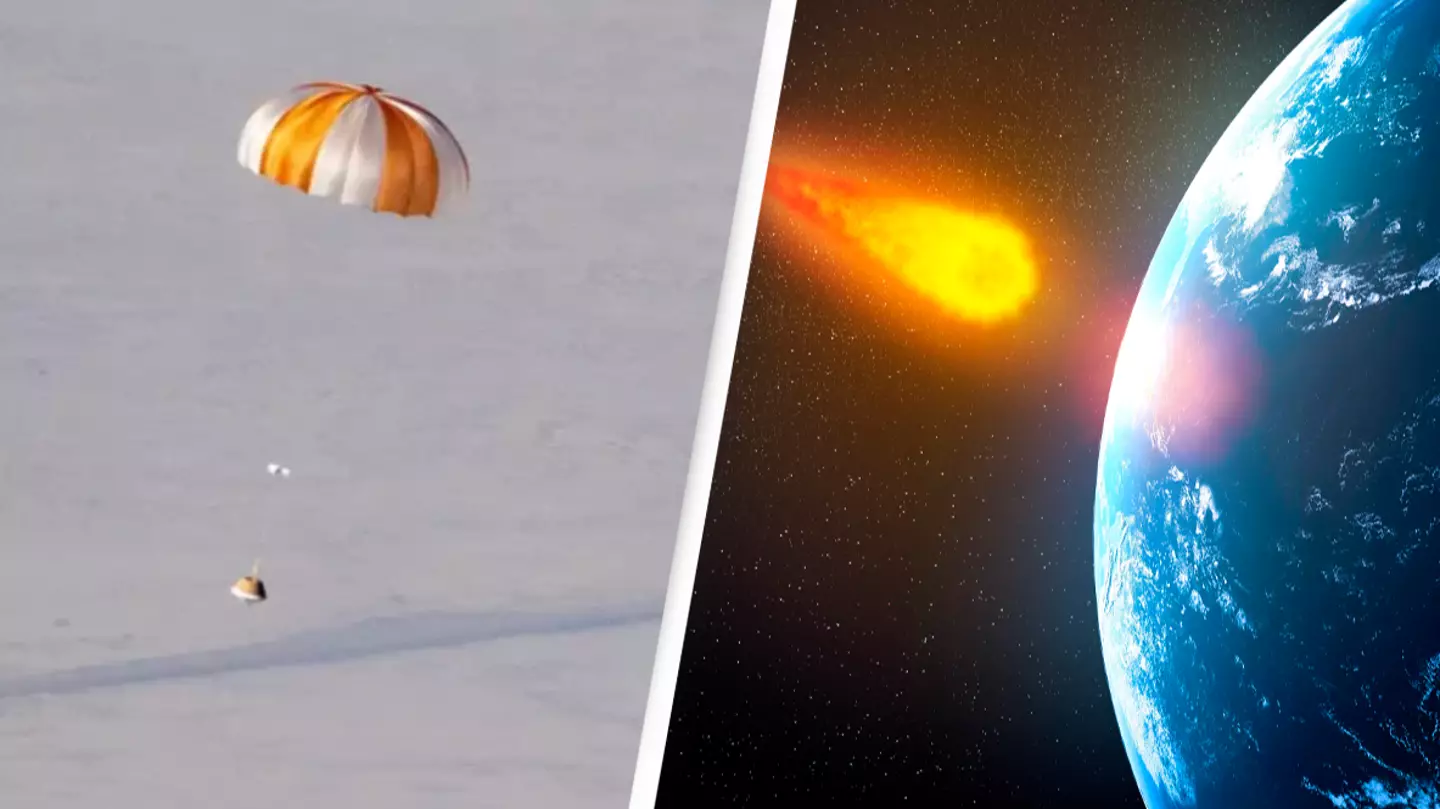
A piece of the most dangerous asteroid known to man will land on Earth this week when it drops to the ground in Utah.
The rocks and dust come from the asteroid Bennu; an asteroid which is shaped like a spinning top and measures approximately 500 metres wide.
It's made up of rocks bound together by gravity, and as a near-Earth object - meaning it comes within about 4.6 million miles of Earth's orbit - is the most dangerous known 'potentially hazardous' asteroid.
Scientists have determined there's a 1-in-2,700 chance that Bennu will impact Earth between the years of 2175 and 2199, so while it's fairly good odds, scientists definitely don't want to ignore it completely.
Advert
In an effort to learn more about the asteroid, NASA in 2016 launched its OSIRIS-REx spacecraft to travel to Bennu and collect a sample of rocks and dust from the surface.
It's this sample from the asteroid which is set to land on Earth this week, when the spacecraft releases the capsule containing the sample over Earth's atmosphere.
If all goes to plan, the capsule will parachute to the Department of Defense's Utah Test and Training Range on Sunday (24 September).
The mission has been carried out with a goal of helping scientists investigate how planets formed and how life began, as well as improve our understanding of asteroids that could be at risk of hitting Earth.

Prof Dante Lauretta, the principal investigator on the mission, explained the significance of the mission as he commented: "When we get the 250g (9oz) of asteroid Bennu back on Earth, we'll be looking at material that existed before our planet, maybe even some grains that existed before our Solar System."
Advert
Per BBC News, Lauretta added: "We're trying to piece together our beginnings. How did the Earth form and why is it a habitable world? Where did the oceans get their water; where did the air in our atmosphere come from; and most importantly, what is the source of the organic molecules that make up all life on Earth?"
Once the capsule lands on Earth, it will be collected by the OSIRIS-REx team and taken to a special room to avoid contamination.
Nitrogen will be used to remove oxygen and moisture from the sample canister, after which the sample will be taken to NASA’s Johnson Space Center so scientists can get to work researching the material.
The space agency is set to live stream the delivery of the sample from 10am ET on Sunday. The capsule is expected to enter Earth’s atmosphere at 10:42am ET and travel at about 27,650 miles per hour before landing in Utah about 13 minutes later.